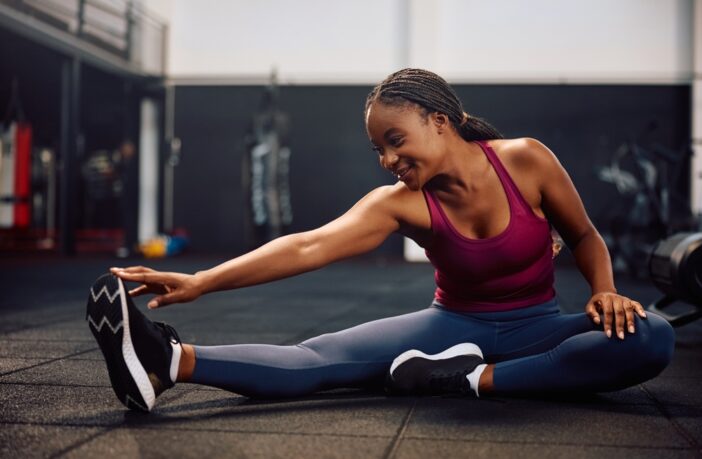Going to the gym is an excellent way to maintain your health and fitness, but it also poses certain risks, particularly the risk of fungal infections. Fungi thrive in warm, moist environments, making gyms a common breeding ground for these pesky microorganisms. Fortunately, with the right precautions, you can significantly reduce your risk of contracting a fungal infection while enjoying your workouts.
Understanding the risk of fungal infections at the gym
Fungal infections, such as athlete’s foot, jock itch, and ringworm, are common issues for gym-goers. These infections are caused by fungi that thrive in warm, damp places like locker rooms, showers, and gym equipment. Understanding the risks associated with these environments is the first step in preventing infections.
Athlete’s foot: This infection usually affects the feet and is characterized by itching, burning, and cracked skin between the toes. It is highly contagious and can spread through direct contact with contaminated surfaces or infected individuals.
Jock itch: Common among athletes, this infection affects the groin area, causing a red, itchy rash. It thrives in warm, moist environments and can spread through contaminated towels or clothing.
Ringworm: Despite its name, ringworm is not caused by a worm but by a fungus. It can affect the skin, scalp, and nails, presenting as a red, circular rash with a clear center.
How to avoid fungus at the gym
Preventing fungal infections at the gym requires a proactive approach and attention to hygiene. Here are some practical tips to help you stay fungus-free:
Wear flip-flops in communal areas: Locker rooms, showers, and pool areas are breeding grounds for fungi. Wearing flip-flops or shower shoes in these areas can prevent direct contact with contaminated surfaces.
Keep your feet dry: Fungi thrive in moist environments, so it’s crucial to keep your feet dry. Use an antifungal powder on your feet and in your shoes, and change your socks regularly, especially if they become damp with sweat.
Shower immediately after your workout: Showering immediately after exercising helps remove sweat and dirt that can harbor fungi. Use antifungal soap, and make sure to dry off thoroughly, paying extra attention to areas prone to moisture, such as between your toes and around your groin.
Avoid sharing personal items: Do not share towels, shoes, or clothing with others. Fungi can easily spread through contaminated items, so it’s best to use your own and wash them regularly.
Clean and disinfect equipment: Wipe down gym equipment before and after use with disinfectant wipes. This helps remove any fungi left by previous users and prevents you from spreading your own germs.
Choose breathable clothing: Wear moisture-wicking, breathable fabrics that help keep sweat away from your skin. This can reduce the likelihood of fungal growth in areas where sweat tends to accumulate.
Preventing infections with proper hygiene
In addition to avoiding fungi, maintaining good hygiene practices can help prevent a wide range of infections at the gym. Here are some essential hygiene tips to keep in mind:
Wash your hands regularly: Wash your hands with soap and water before and after your workout. This simple step can prevent the spread of germs and reduce your risk of infection.
Use a clean towel: Always bring a clean towel to the gym and use it to create a barrier between your skin and gym equipment. Wash your towel after each use to avoid contamination.
Avoid touching your face: Your hands come into contact with many surfaces at the gym, making them a potential source of infection. Avoid touching your face, especially your eyes, nose, and mouth, to reduce the risk of transferring germs.
Keep cuts and abrasions covered: Open wounds are an entry point for infections. Keep any cuts or abrasions covered with a bandage to protect them from exposure to bacteria and fungi.
Stay hydrated: Drinking plenty of water helps maintain your overall health and keeps your skin in good condition, reducing the risk of infections.
Recognizing and treating fungal infections
Despite your best efforts, you may still develop a fungal infection. Early recognition and treatment are crucial to prevent the infection from spreading and becoming more severe. Here are some signs to watch for and steps to take if you suspect a fungal infection:
Itching and burning: Persistent itching and burning sensations, especially in areas prone to moisture, can indicate a fungal infection.
Red, scaly, or cracked skin: Fungal infections often present as red, scaly patches of skin or cracks, particularly between the toes or in the groin area.
Blisters or sores: In some cases, fungal infections can cause blisters or open sores. These should be treated promptly to prevent further complications.
Discolored or thickened nails: Fungal infections can affect the nails, causing them to become discolored, thickened, or brittle.
If you notice any of these symptoms, taking action immediately is essential. Over-the-counter antifungal creams, sprays, or powders can effectively treat many fungal infections. Follow the instructions carefully and continue treatment for the recommended duration, even if symptoms improve. For more severe or persistent infections, consult a healthcare professional for advice and possible prescription treatments.
Conclusion
Preventing fungal infections at the gym requires vigilance and good hygiene practices. Understanding the risks and taking proactive measures can significantly reduce your chances of contracting an infection. Remember to wear flip-flops in communal areas, dry your feet, shower promptly after workouts, avoid sharing personal items, and disinfect gym equipment. Maintaining proper hygiene, such as washing your hands regularly and using clean towels, will help prevent a wide range of infections.
By following these tips and staying mindful of your hygiene, you can enjoy a healthy and infection-free gym experience. Remember, the key to prevention is consistency and attention to detail. Stay proactive, stay clean, and enjoy your workouts without worrying about fungal infections.
This story was created using AI technology.



